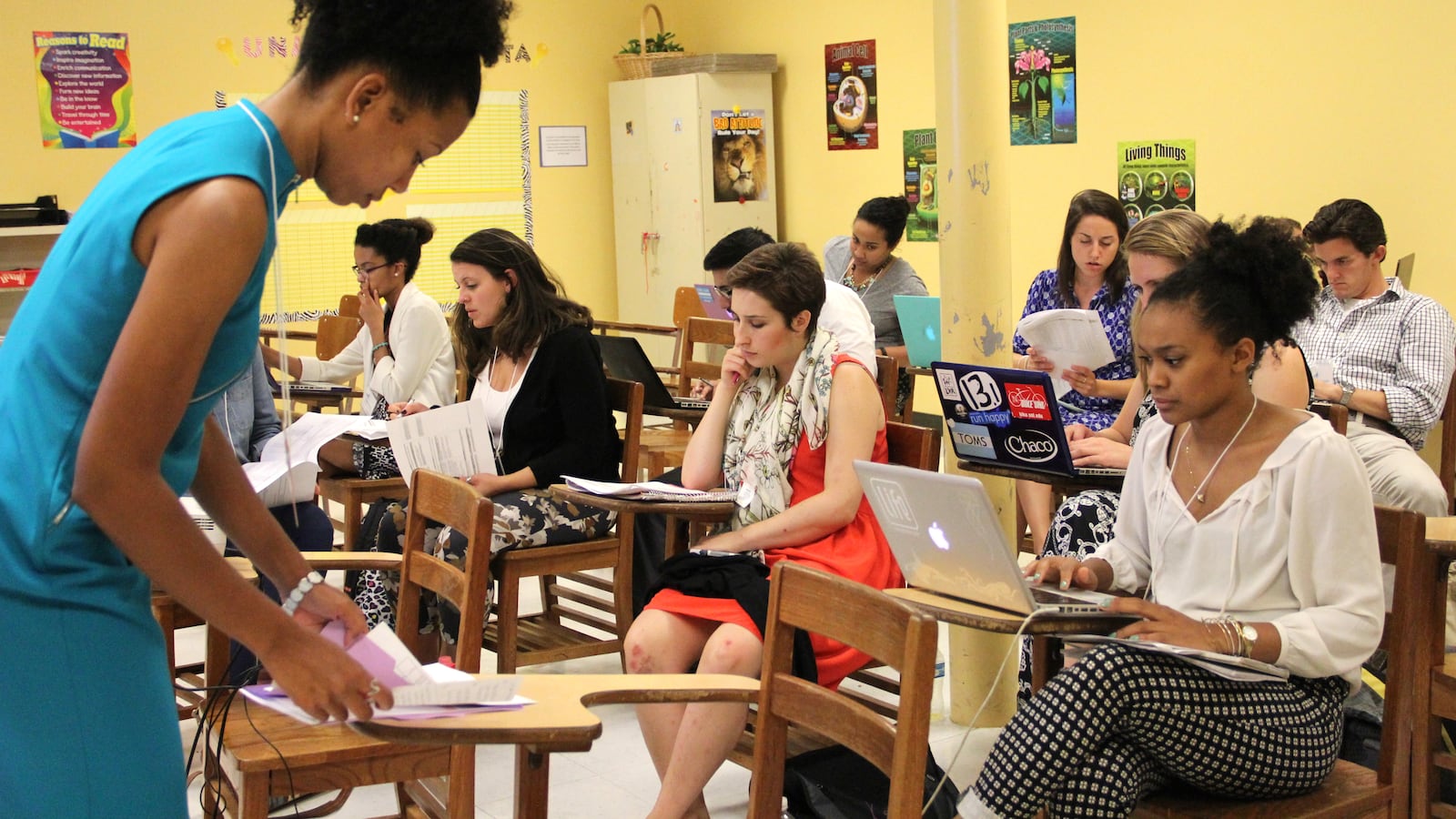Nearly all of Tennessee’s top-performing teacher training programs are in the Memphis and Nashville areas, and about half aren’t based at a university, according to a new state report.
Using a new grading system, the State Board of Education issued its 2016 report card Thursday on Tennessee’s 40 preparation programs. These schools or programs received top marks:
- Cumberland University, Lebanon
- Lipscomb University, Nashville
- Memphis Teacher Residency
- Teach For America-Memphis
- Teach For America-Nashville
- The New Teacher Project/Nashville Teaching Fellows
- Union University, Jackson
The ratings give legitimacy to Tennessee’s growing crop of non-traditional training programs and also are good news for its two largest school systems. Six of the seven programs place more graduates in Shelby County Schools in Memphis and Metropolitan Nashville Public Schools than any other district.
Missing from the top tier are the state’s two largest programs — at Tennessee Technological University and Middle Tennessee State University. Both received a score of 2 on a scale of 1 to 4. Other large programs scoring a 3 are the University of Memphis, the University of Tennessee at Knoxville, Vanderbilt University, and Austin Peay State.
Teacher quality is considered a driving factor in students’ success, putting a national spotlight on programs that train the educators who go on to lead K-12 classrooms. The issue also has moved to the front burner in Tennessee, where a recent report said most of the state’s programs aren’t equipping new teachers to be highly effective in their classrooms.
The rebooted report card, produced in conjunction with the State Department of Education and the Tennessee Higher Education Commission, is designed to provide a clearer picture of the quality of training programs for stakeholders that range from aspiring teachers to the school principals who hire them.
“Tennessee is the fastest improving state in the nation for student achievement. But to hold this trajectory, we must continue to ensure high expectations for students, schools and teachers, including how we train and prepare our newest teachers,” said Sara Heyburn Morrison, the State Board’s executive director. “This (report card) offers important, user-friendly information about how we are preparing students for classroom success.”
It’s the first time the state has evaluated its teacher prep programs primarily on outcomes — for instance, if teacher candidates were hired in Tennessee public schools, and the evaluation scores they received as classroom teachers.
The programs also were graded based on racial diversity, candidates’ ACT scores, and whether they are producing teachers for high-need areas such as special education. The first metric reflects increasing consensus among educators and researchers about the importance of having a teacher force that represents the student population they are serving.
Of the state’s 10 largest providers, only Lipscomb and Union received a 4. Other prominent programs didn’t fare so well.
Tennessee Tech, the state’s biggest program with 756 completers for the 2013-14 and 14-15 school year, scored relatively low marks across all categories.
Middle Tennessee State, the state’s second-largest provider, received high marks for the percentages of teachers placed in Tennessee public schools and high teacher retention rates. However, it scored low on the candidate profile part of the report card, which included racial diversity and the percentage of completers who received high-demand endorsements.
The University of Memphis, which granted 571 teaching licenses in the 2013-14 and 14-15 school years, fell short of an overall 4 because of its graduates’ teacher evaluation scores.
Some well-regarded programs missed the cut, even though they scored well when it came to producing effective teachers. The University of Tennessee-Knoxville received a 3 in part because of a lack of diversity. Vanderbilt, which has an internationally renowned education program missed the top score because of its low score for in-state job placement. Many of the private university’s graduates go on to teach in other states.
“I think it shows how difficult it is to get a complex picture into a single measure,” said Vanderbilt education professor Barb Stengel of her school’s score. “But I trust (the State Board) to finetune it.”
Stengel noted that part of Vanderbilt’s mission as a private research university is to attract minds from across the globe. That doesn’t mean its graduates aren’t effective, she said, or that people who don’t want to teach in Tennessee shouldn’t consider the program.
One of the nation’s most contentious education debates is whether teachers should be trained in university settings, or in programs like Teach For America, which place teachers with little training directly into classrooms.
But the divide between “traditional” and “alternative” programs is hardly cut-and-dry. In the case of three of the non-traditional programs receiving top marks — both chapters of Teach For America and the Memphis Teacher Residency — teacher candidates take classes at universities. And Memphis Teacher Residency requires candidates to spend a year student-teaching while taking education classes before they lead their own classrooms.
To address some of those nuances, the new report card includes information like how long candidates spend in the classroom before gaining their license, although that wasn’t part of the overall scores.
The report card is not tied to State Board decisions about accreditation renewal for training programs. Providers receive separate reports tied to those decisions, though the data is similar, according to Heyburn Morrison. “More than anything, we want (the report card) to be a tool for continuous improvement and starting important conversations,” she said.
Those conversations already have started, according to Eric Cummings, dean of Cumberland University’s School of Education. He and his faculty are looking for ways to increase diversity and the number of candidates who go into math and science, subjects for which there’s a shortage.
“I think that’ s a great challenge,” Cummings said. “They can use the data to evaluate how effective we are, and we can use the data to improve our programs.”
The full report card can be found here.

